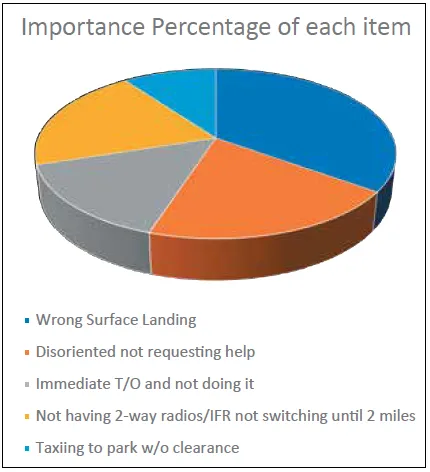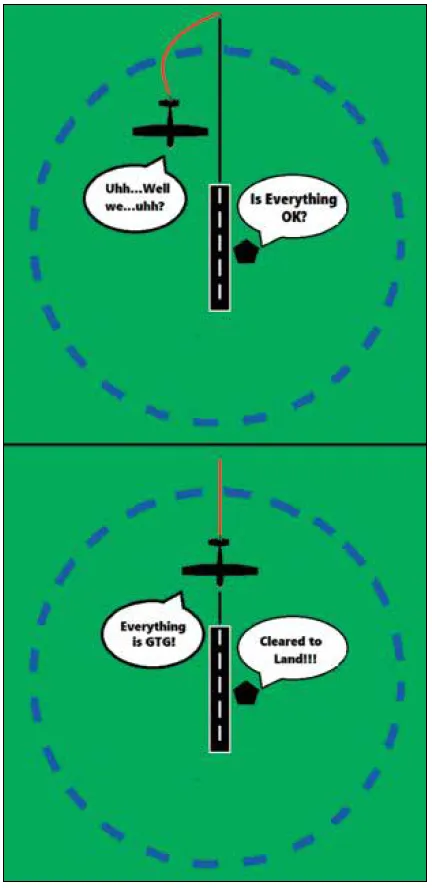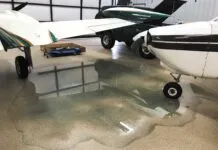Being both a pilot and air traffic controller, I enjoy learning the dos and don’ts from both sides of the mic. We’re all human and everybody makes mistakes—yes, even controllers as I’ve observed from the pilot seat. But, I’m hoping you’ll ride along with me as I share some observations from the tower cab about a few pilot actions that, well, could use improvement.
Wrong Surface
One of the top-five trending safety items is wrong-surface landings. According to faa.gov: “A wrong-surface event occurs when an aircraft lands or departs, or tries to land or depart, on the wrong runway or on a taxiway. It also occurs when an aircraft lands, or tries to land, at the wrong airport.” So, they are a big deal.
A wrong-surface event can bring significant consequences ranging from an automatic pilot deviation report to fatalities. Fortunately, loss of life is far less common than the underlying event. The most obvious example in recent years was the Air Canada Airbus that almost landed on a taxiway filled with other aircraft at San Francisco. The pilot went around.
Landing on the wrong runway— more common on parallels—or on a taxiway has the obvious potential of hitting another airplane. You can add many human factors into the mix, the most common being expectation bias and situational awareness. One way to help guard against this is to always load an approach to the planned runway. Garmin’s visual approaches make this even easier. Also, some pilots like to announce, “Runway xx confirmed,” or something similar as part of their final GUMPS check. This is and has been a continuing issue for years, so I encourage you to explore ways of avoiding wrong surface landings.
‘Fess Up
Another problem relates to how readily pilots can ask for help when things aren’t quite right. I’ve said it before; Tarrance Kramer has said it in his articles; and even our editor makes a point of it: Ask for help whenever you don’t understand or are simply disoriented or confused. We’ll do whatever we can to bring clarity to your issue. The key, of course, is how quickly you can recover; seconds can be critical.
How do we notice? We might see an erratic or simply incorrect track, either on our radar or simply by looking out the tower window on a nice day. I had one aircraft flying erratically on an ILS, doing S-Turns and generally struggling. Approach had switched him to Tower 10 miles out, but the pilot didn’t call me until four miles out while obviously struggling and calling with an unsure voice. I asked if everything was alright. With the flight path he was flying and the extended “uh” response to my query, my best response became clear. “Fly present heading and maintain 3000.” I called Approach and told them what I did and why, and they responded with, “Oh yeah. He was having all kinds of problems.”
A VFR tower telling an IFR aircraft to fly a heading and maintain an altitude is not something I should do without coordination first. But, I recognized that all might not be going well so I reacted. Thankfully, the pilot came back around again and seemed to have a better handle on things. After he landed, I asked, “How about that first approach?” he responded, “Yea, I got disoriented, and it took me a bit to figure it out.”
Cleared For Immediate
There are two phrases ATC uses to indicate an urgency with their instruction. First is, “without delay.” This means that things are fine at the moment, but any delay on your part might lead to this next phrase. “Immediately” is used by ATC to indicate that a perilous situation is developing and you need to react right now to avoid a mishap.
With that in mind, the next item on the hit parade is “immediate takeoff.” Few pilots like this directive, and fewer still properly comply. You should know that we occasionally have to pull some squeeze plays to keep things moving. Pilots who accept the clearance must act immediately. Now, controllers know that if we’re dealing with heavy aircraft, nothing is really immediate. But “Cleared for an immediate takeoff,” doesn’t mean that you can stop and do a run-up or take the runway and pause for a checklist. It means you should get out there and go. Push the throttle(s) forward. If you’re not ready, simply refuse the clearance. As PIC, you have all the power in the world to say “unable.”
Communications Discipline
We all know the rules and requirements to enter a Class D airspace—two-way radio communication. I still see VFR traffic entering my Class D without establishing that two-way communication. “Oh yeah,” they say. “I was waiting for you to get back to me.” My reply is often, “Okay, I’m getting back to you now. I have a phone number for you; advise when ready to copy.” Of course, it’s a big sky and about half the time nothing happens. That means that half the time they get too close to somebody else. If you don’t have two-way radio communication with a Class D tower, stay out. If you don’t have a VFR Bravo clearance, even if you’re being vectored toward Bravo airspace, ask for the clearance, and stay out until you get it.
IFR pilots are conditioned to stay on Approach frequency until told to contact Tower. What if ATC forgets? This is not good, as there could be traffic or other things going on, to which the pilot is oblivious. I’ve even had a pilot stay with Approach all the way until he landed and exited the runway.
IFR pilots should be talking to Tower by about four miles out, regardless of any approach. (There are exceptions, such as prior coordination or a PAR approach for military pilots.) If you haven’t been switched to Tower, just ask. “Do you want Cloudbasher 123 to Tower?” Whatever you do, don’t land without a clearance.
Taxi Time
Some pilots will taxi to parking without a clearance. Now, I’ve heard the stories and understand that at some bigger airports, they want you to keep rolling like your life depended on it, but you’re still expected to call Ground when you can. Since no Class C or D airport is that busy, call Ground as you’re exiting the runway to prevent the possibility of meeting another airplane face to face.
If you haven’t previously received taxi instructions, cross the hold line to the taxiway side and stop unless given instructions to continue. Don’t go anywhere outside the non-movement area without a clearance. It takes only a few seconds, and it’s a requirement.
Final Outcome

There are many approaches (pun intended) you can take to reading this. Some of these items might not be rel evant based on the type of flying you do. For example, a back-country bush pilot might never talk to ATC, but each of these items has an aspect of safety behind it and originated with my personal observations. I have compiled this list of incidents, problems, and my “pet peeves” over the past few years. It started with more than 50 items, but I have narrowed it to the most important ones. They involve all pilots, from the 15-hour solo student to the 15,000-hour “I stopped counting” pilot. As controlled airspace is most of the NAS, there is always room for improvement, even on the ATC side. How to go about that is a subject for another article.






IFR is my favorite magazine and articles like this are what I look forward to reading